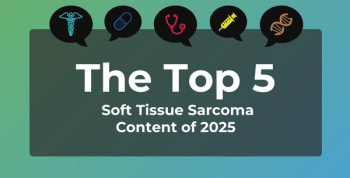
Low-Income Communities Lacking in Specialty Mental Health Treatment Options
A new study has found that high-income communities are more likely to have access to specialty mental health treatment resources, including office-based practices, than low-income areas.
A new study has found that high-income communities are more likely to have access to specialty mental health treatment resources, including office-based practices, than low-income areas. Researchers indicated that outpatient mental health treatment facilities, which were more commonly found in low-income communities, can provide an avenue to reduce disparities in access to care.
Using data from the online Behavioral Health Treatment Services Locator provided by the federal Substance Abuse and Mental Health Services Administration, the researchers identified 7770 outpatient facilities that provided specialty mental health treatment. They then collected data from the Zip Code Business Patterns database to identify 11,165 mental health specialty practices operated by physicians like psychiatrists and 20,290 practices operated by non-physician professionals. Finally, the data were merged with sociodemographic metrics for almost 32,000 communities broken down by median income quartile and metropolitan, suburban, or rural area.
The researchers found some notable disparities in the distribution of mental health facilities. Over 4 in 10 communities in the highest income quartile had any type of specialty mental health treatment location, compared with less than a quarter of those in the lowest quartile. Specifically, the wealthier areas were significantly more likely to contain office-based practices of both physicians and non-physicians, even after adjusting for covariates like community size and age, race, and sex distribution among residents.
However, the communities in the lowest income quartile were more likely to have outpatient mental health treatment facilities than those in the highest quartile (16.5% vs 12.9%). Of the lowest-income areas that could access at least 1 mental health resource, over 70% had an outpatient mental health facility.
Urban or suburban communities were significantly more likely to contain each of the 3 types of resources (outpatient facility, physician practice, or non-physician practice) compared with rural areas. For instance, mental health practices run by specialist physicians were present in 17.6% of the urban or suburban communities and just 1.6% of the rural ones.
Putting these findings into context, the authors explained that “mental health treatment facilities—which are more likely to serve vulnerable populations—are the backbone of the outpatient specialty mental health care infrastructure that exists in local low-income and rural areas.” They noted that more than 9 out of every 10 of these facilities accept Medicaid, while office-based psychiatrists are less likely than other specialists to accept Medicaid or private insurance, which incentivizes them to establish practices in wealthier areas.
The researchers recommended that efforts to address these disparities should focus on expanding options within low-income or rural communities that either contain no mental facilities or have only specialty practices that do not accept Medicaid, which places care out of residents’ reach financially if not geographically. Their suggestions centered on allocating funding for community health center locations in these areas, like federally qualified health centers, that would allow these clinics to function as providers of mental health care.
“To the extent that gaps in geographic accessibility to mental health treatment resources exist in vulnerable communities, policymakers may consider bolstering resources for expanded behavioral health care services in other safety-net facilities,” they concluded.
Newsletter
Stay ahead of policy, cost, and value—subscribe to AJMC for expert insights at the intersection of clinical care and health economics.








